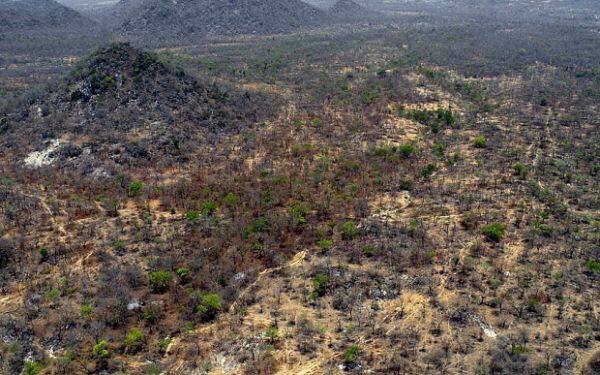The Sambisa Forest, located in Borno State in North East Nigeria, has become synonymous with Boko Haram terrorism. Boko Haram has waged a bloody war against the Nigerian state in a bid to force its own brand of extreme religious order on the secular state. Few people know that an integral part of the forest was once a flourishing reserve that attracted tourists from far and near.
The British colonial administration gazetted the Sambisa Forest as a reserve in 1958, making it one of the conservation legacies bequeathed to Nigeria by the colonial power. In 1977, the area was re-gazetted as a National Game Reserve for the preservation of rare animals. Covering about 518km² on a flatland and drained by the Ngadda and Yedseram rivers, Sambisa’s abundant greenery could rightfully be called a pearl in the semi-desert environment that characterises most parts of the upper region of the North East. For a long time it was home to varieties of wild animals.
In the 1970s, Sambisa used to attract tourists for safaris. Today, the story has changed. The Sambisa Forest constitutes the parapet of Boko Haram insurgency. The strategic symbolism of the forest is such that it evokes phobia and mystery, signifying the territorial dimension of Nigeria’s national security. Sambisa provides the insurgents with a space for organising their central prayer sessions, interrogating and executing abductees, producing media instruments and doing their military combat trainings. They take all seized weapons and vehicles there and store for major operations.
Sambisa hosts the organisational, operational, logistical and technical infrastructure of Boko Haram, including its regional command, armoury, training, detention and execution camps, landmines, artisanal bomb-making factories, prayer grounds, military and civilian supplies, loots and livestock. It is also the major destination for the insurgents’ prisoners of war, including abductees, sex slaves and those kidnapped for ransom.
Sambisa came into international recognition in 2014 following the mass abduction of the Chibok school girls. After that incident, the forest has been a critical theatre of counter-insurgency operations by Nigerian troops. Despite the significant successes made by the Nigerian armed forces in gaining entrance and reclaiming the forest between 2015 and the present, some parts of the forest are still under strong control of the insurgents.
The Nigerian troops have often encountered operational setbacks in their bid to dislodge the insurgents from their concentration posts in the forest. The main challenges naturally emanate from the huge nature of the forest, as well as its virtual ungovernability. In addition to its expansive nature, the forest is located along an equally expansive international frontier, characterised by porous and poorly policed borderlines. This has made it possible for the insurgents to manoeuver their way and reinforce their tactical positions.
Another major challenge is that the forest has been heavily weaponised and fortified over the years. Clear indicators of this trend include the presence of combat-ready terrorists, suicide bombers and landmines, coupled with the availability of very sophisticated weaponry, as well as the insurgents’ brutal efficiency in the Northern theatre of combat, the highly militarised and weaponised forest has so far proven a hard point for the government troops. The insurgents’ occupation of the forest has been accompanied by corresponding exploitation of the terrain. For more than a decade the Boko Haram insurgents have maintained their strategic stronghold on the forest; exploiting its strategic terrain and resources for sustaining its campaign of terror.
Beyond these, the insurgents have also effectively utilised the forest as a major site for media production dedicated to propaganda, ideological warfare and radicalisation. By doing all these, they have been able to sustain an appreciable level of international visibility and propaganda.
It is relevant to reiterate that, in comparison with other areas of Nigeria, Sambisa Forest is the most strategically auspicious base for the pattern of asymmetric guerrilla warfare and jihadist occupation used by Boko Haram. It is extremely sparse and expansive, and therefore very difficult to govern. It is also located within a trans-territorial area characterised by porosity of borders.
Most importantly, its physical topography, comprising woodlands interspersed by hills, rocks and jungles, is amenable to asymmetric manoeuvrability. The penetrable nature of the borderlines, as well as the forested landscape in the Lake Chad region, has afforded the insurgents with the maximum opportunity of trans-border tactical manoeuvrability. In this regard, it has been observed that: “When Boko Haram insrgents attack any Nigerian community, they would simply ‘dive’ into the forest for cover and appear in any of the Lake Chad Basin countries that interests them, and that is the end of the operation.”
Within the lower Lake Chad Basin, the transnational threat of insurgency has been most immanent and palpable. The exigencies of counter-insurgency in the Lake Chad region have necessitated and recommended the adoption of a multinational approach towards finding a lasting solution to the prevailing threat.
Captain Palash Kausher is an ex-officer of the Bangladesh Army and a security specialist. He now works with the International Institute of Tropical Agriculture (IITA) in the North East of Nigeria.

 Join Daily Trust WhatsApp Community For Quick Access To News and Happenings Around You.
Join Daily Trust WhatsApp Community For Quick Access To News and Happenings Around You.


